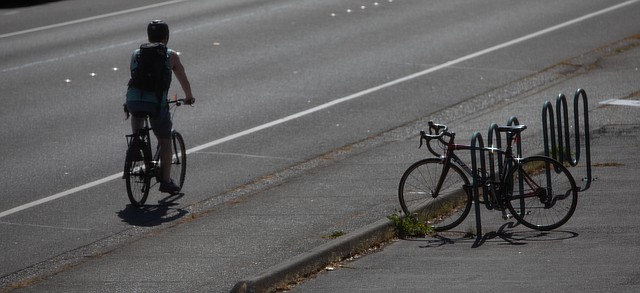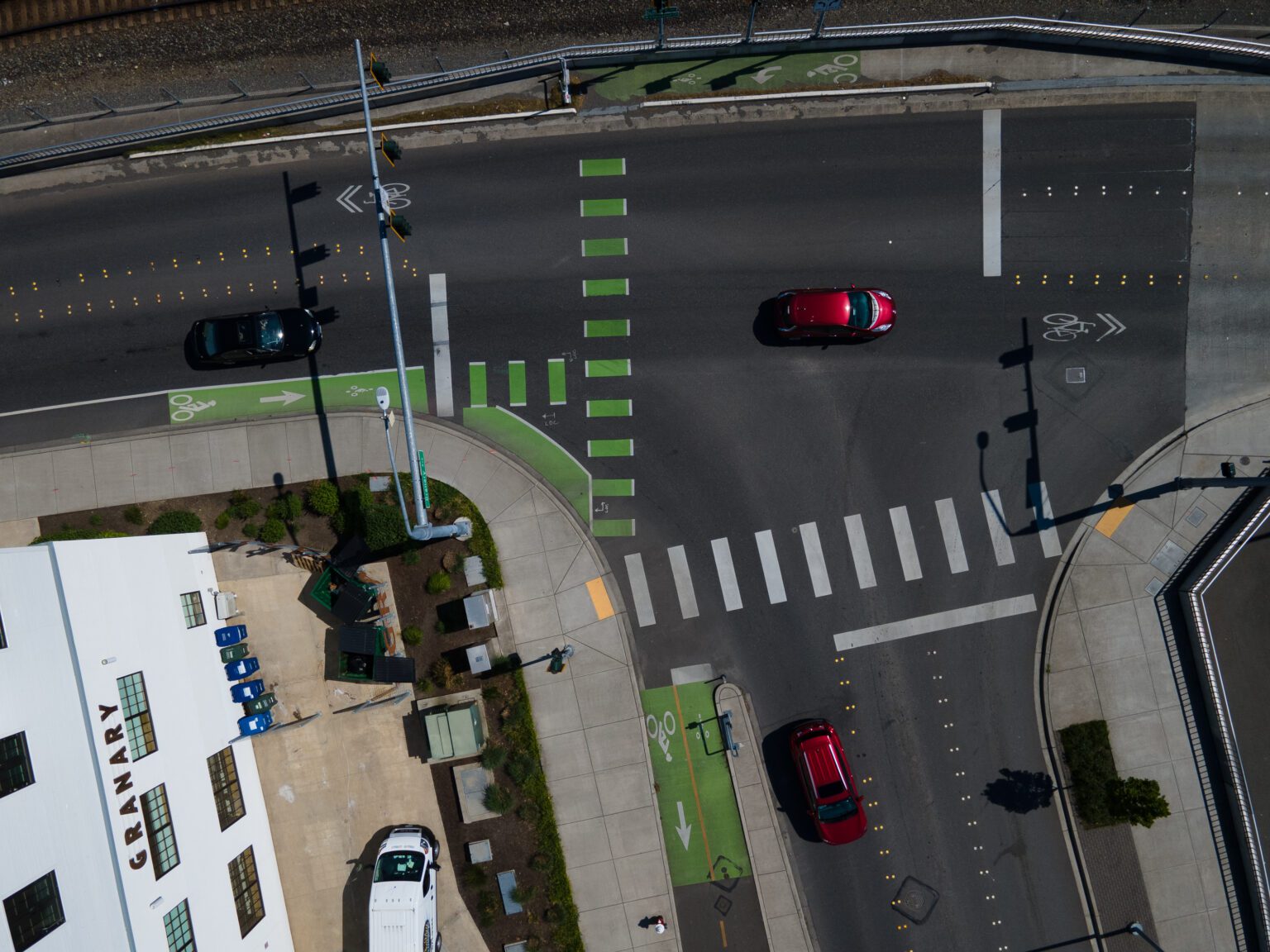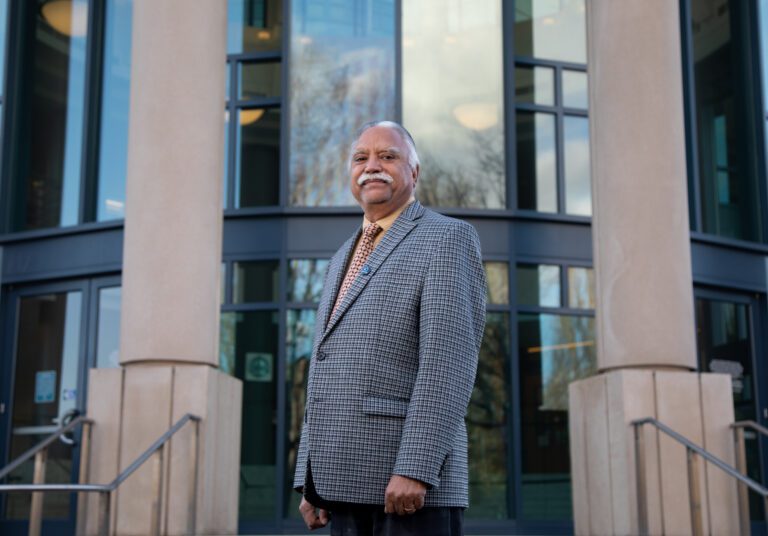Through the end of this month, the City of Bellingham is seeking public input to develop updates to its bicycle master plan, the future of Bellingham’s bikeways.
Cycling makes up 3.3% of all transportation in Bellingham, according to the city’s most recent data in its 2022 Transportation Report on Annual Mobility. As the city works toward a long-term goal of 12% by 2036, public feedback will help shape the next 10 years of its comprehensive plan, said Chad Schulhauser, assistant Public Works director and city engineer.
“That feedback is absolutely critical to let us know where the ridership is, where the need is and the wants are,” he said.
Through the city’s Engage Bellingham site, community members can contribute to an online survey and interactive map to identify areas of concern and desired improvements. For residents like Beth Hartsoch, these resources offer an opportunity to highlight needs in the city’s planning process.
Hartsoch, who served on the city’s bicycle and pedestrian advisory committee in 2008, has cycled, walked and ridden the bus for years. When she began traveling with her children, however, she started to recognize shortfalls in the city’s micro-mobility networks.
“I think that was really when I began to notice the disconnect between what we espoused in our plans and what was actually casting concrete on the ground,” Hartsoch said. “We said that we were going to prioritize safe networks for all ages and abilities, but when it came down to it, we have kids playing Frogger.”
The bicycle master plan was approved by Bellingham City Council in 2014. Since then, the city has completed 53% of the networks identified in the original plan, created 87 miles of new bike lanes and 29 intersection crossing improvements, Bellingham Public Works Communications and Outreach Manager Riley Grant said in an email.
Bellingham was awarded the Governor’s Smart Communities Award in 2019 for implementation of the plan and was recognized as a gold-level bicycle-friendly community in 2020 by the League of American Bicyclists.
While the city’s upcoming projects and updates impact cyclists, they also hold relevance for drivers.
Publicly posted questions from community members, which can be viewed on the master plan’s Engage Bellingham site, indicate that some residents are concerned about what the plan means for traffic and parking. Added bike lanes on arterials can remove parking spaces and slow traffic by narrowing the road. Samish Way, for example, has seen regular traffic jams with the addition of bicycle and pedestrian infrastructure.
 A biker rides down Dupont Street in Bellingham. (Hailey Hoffman/Cascadia Daily News)
A biker rides down Dupont Street in Bellingham. (Hailey Hoffman/Cascadia Daily News)
Others feel the city’s investment in new bicycle infrastructure outweighs the number of cyclists actually using those resources.
These concerns aren’t unfounded; published city data suggests that overall bicycle counts have decreased from 2015–20. However, Schulhauser said this data only captures a snapshot in time versus the full picture, especially because the city was unable to conduct bicycle and pedestrian counts during the pandemic. The city’s observations and anecdotal evidence, he said, still suggest that more bicycle infrastructure correlates with more bicyclists.
Hartsoch sees it as a “build it and they will come” situation.
“The key is thoughtful design because if it’s designed well, then it will be used,” Hartsoch said. “And then there’s this feedback cycle where if you have twice as many people riding to the, whatever it is, then you have that many fewer cars that need to park there. You have that many fewer cars that are in traffic there.”
Hartsoch said she feels there’s still work to be done, too. Some concerns can be pinpointed on the city’s interactive map — like the need for an uphill bike lane on West Chestnut Street, or areas along Eldridge Avenue that have proven perilous to cyclists. But Hartsoch said she also hopes to see overarching, holistic changes.
“One of my hopes for this revision is that we will step away from the focus on identifying individual projects, and we will reconsider the 50,000-foot planning process,” Hartsoch said, adding that she’d like to see the city become more responsive to change, including updates from partners, and use the best technology available to complete a bicycle network for all ages and abilities.
All ages and abilities bicycle networks rely on physically separated bike lanes and multi-use paths, which generally allow for more robust networks than traditional painted bike lanes, according to the Federal Highway Administration Bikeway Selection Guide.
Hartsoch said one way to expedite the creation of safer bicycle networks is through quick-build projects, which use cheaper materials to make reversible changes to a network. Quick build practices can include adding plastic flex posts, paint, cones, flowerpots or curb extensions to help calm traffic by visually narrowing the roadway.
Although the city has no current quick-build projects (which it refers to as pilot projects) underway, Schulhauser said it does occasionally use them.
“They’re more trying to test out our theories or designs,” he said. “We’ve had a call, people have wanted to see this type of facility in place, so let’s go test it out and see if it will actually work.”
The city will develop updates to the bicycle master plan in summer 2023, conduct a stakeholder review in summer and fall of the same year, and likely adopt the updates in winter 2023–24. As the city looks ahead to its last two weeks of discovery, Schulhauser said public input is crucial.
“We really encourage people to engage on the website, as well as [at our] open house,” Schulhauser said. “We need the information to prepare the best plans we can.”




